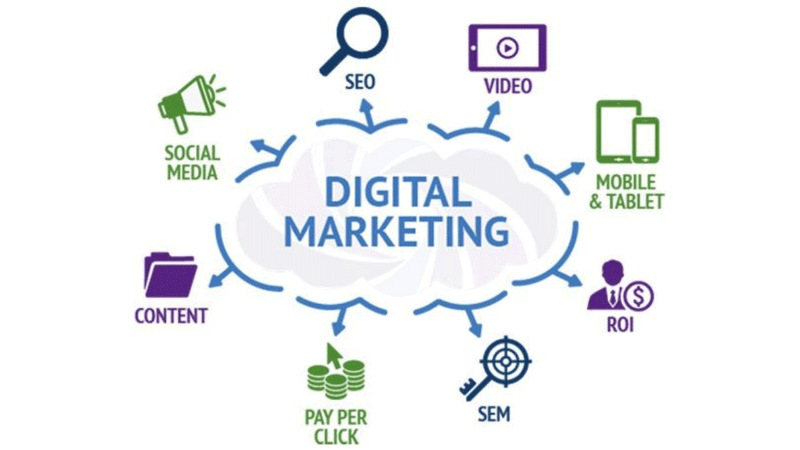Enhance Individual Experience and Drive Web Traffic With Receptive Website Design
In today's digital landscape, where customers are accessing web sites from a plethora of tools, receptive web layout has actually become more vital than ever. With its capacity to adjust and perfectly readjust to different display dimensions, responsive style not only boosts individual experience yet likewise drives traffic to your web site.
Why Responsive Internet Design Issues
Responsive website design is a crucial element of modern web growth because of its capacity to guarantee optimum individual experience throughout various tools and display sizes. With the expansion of smartphones, tablets, and various other mobile phones, it has actually become vital for websites to adjust and give seamless performance no matter of the device being made use of.
The primary reason receptive website design matters is that it enables customers to have a consistent and satisfying searching experience, no matter of the tool they are utilizing. A receptive site instantly readjusts its layout, material, and layout elements to fit the screen size and resolution of the device, guaranteeing that individuals can easily communicate and navigate with the site with no aggravation or frustration.
Furthermore, responsive website design likewise plays a considerable function in seo (SEO) Internet search engine, such as Google, prioritize sites that are responsive and mobile-friendly in their search engine result. By incorporating receptive layout concepts, web sites can enhance their exposure and ranking, resulting in enhanced organic website traffic and possible clients.

Boosting Individual Involvement Through Responsive Style
Maximizing user interaction is a crucial objective of receptive design, as it makes sure that customers can conveniently access and communicate with web site web content on any device. With the enhancing use tablet computers and smartphones, it is essential for web sites to adjust to various display dimensions and resolutions. Receptive layout makes it possible for websites to automatically adjust their layout and content to offer a seamless user experience throughout devices.
One of the main methods receptive style increases customer engagement is by decreasing tons times. With a receptive site, individuals don't need to wait on different mobile versions to load, causing quicker access to material. This enhanced speed causes greater user fulfillment and encourages them to invest even more time on the website.
In addition, responsive style improves customer engagement by enhancing navigating and user interface (The Ad Firm Web Design). When a site is designed responsively, menus and switches are maximized for touch communications, making it simpler for users to browse and communicate with the site on their mobile phones. This user-friendly and instinctive experience keeps customers involved and motivates them to explore even more of the internet site
In addition, responsive design permits better web content exposure and readability. By adjusting the design and typeface sizes to various devices, receptive sites make certain that individuals can conveniently recognize the content and check out. This boosts individual involvement by decreasing the demand for zooming or scrolling to check out the message.
Enhancing Web Site Web Traffic With Responsive Web Style
With the expanding appeal of mobile phones, having a website that is responsive to various display dimensions and resolutions is crucial for driving increased traffic. In today's digital landscape, individuals are accessing web sites from a range of gadgets such as smart devices, tablet computers, and computer. Each of these gadgets has various screen sizes and resolutions, and if your site is not designed to adjust to these variants, it can cause a bad individual experience and a loss of prospective traffic.
Responsive website design ensures that your website looks and operates ideally throughout all gadgets. By utilizing flexible grids, fluid photos, and media questions, receptive design enables your internet site to instantly change its navigation, material, and layout to fit any type of screen dimension. This indicates that individuals will have a smooth browsing experience no matter whether they are utilizing a huge desktop or a small smart device computer.
Trick Aspects of Effective Responsive Design
Effective receptive design includes several vital aspects that ensure a smooth user experience throughout different gadgets. Among these aspects is adaptable grids and designs. By utilizing family member units like percentages rather than repaired systems like pixels, designers can produce formats that adjust and scale to fit different screen dimensions. This allows material to be presented in a legible and aesthetically appealing way on any kind of device.
An additional important component is media queries. These enable designers to use different styles and formats based on the attributes of the individual's tool, such as screen size and positioning. By utilizing media questions, designers can maximize the discussion of material for every tool, making sure that it is readable and easily available.
Responsive photos are additionally essential in effective receptive layout. Pictures that are too huge can reduce web page lots times on mobile phones, while photos that are too little may show up pixelated on bigger screens. By using techniques such as receptive image resizing and lazy loading, designers can guarantee that pictures are properly sized and optimized for each and every gadget.
Last but not least, effective receptive style involves a mobile-first method. This implies making and focusing on content for smart phones first, and afterwards enhancing the style and broadening for bigger screens. This technique ensures that the most vital content is easily accessible on view it now smaller sized displays, while still supplying a rich experience on larger gadgets.
Best Practices for Implementing Responsive Website Design
Carrying out receptive internet style requires mindful factor to consider of various finest practices to make certain an optimum customer experience across different tools. Right here are some key finest practices to adhere to when executing receptive website design.
First of all, it is essential to focus on mobile users. With the boosting prominence of smart phones, making for mobile-first has ended up being crucial. Begin by making for smaller screens and after that considerably enhance the design for bigger displays.

Another crucial best technique is to enhance photos for different display resolutions. Big photos can decrease the filling time of your web site, especially on mobile gadgets with slower connections. Use receptive pictures that can be resized based upon the device's display resolution to improve performance.
In addition, test your internet site on different gadgets and display sizes to make sure a consistent and seamless experience. There are different screening tools offered that can help you identify any issues and make necessary adjustments.
Lastly, prioritize functionality and availability. Make certain that your internet site is simple to navigate, with succinct and clear content. Make sure that your web site comes to people with specials needs and adheres to ease of access guidelines.
Final Thought
In final thought, responsive internet design plays a crucial function in enhancing customer experience and driving traffic to internet sites. By embracing responsive style concepts, web sites can ensure optimum viewing experiences throughout different tools, leading to boosted user interaction.
Optimizing individual involvement is an essential objective of responsive style, as it ensures that individuals can conveniently gain access to and connect with web site content on any device. Responsive design makes it possible for web sites to instantly adjust their design and web content to provide a smooth customer experience across gadgets.
In addition, receptive design improves customer involvement by improving navigation and individual interface.Receptive images are also vital in reliable responsive design. By embracing receptive layout concepts, websites can guarantee ideal checking out experiences across various tools, leading to increased browse around this site user interaction.